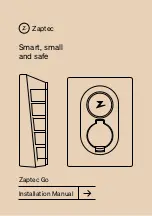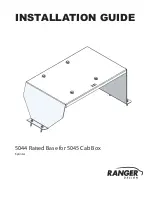
61
DRIVING CONTROLS
WARNING
After driving through a ford or flood,
some loss of braking response may be
experienced until the brakes have dried
out. As soon as it is safe to do so after
such an encounter, apply the brakes until
normal operation is restored. Failure to
do so may result in an accident.
Anti-lock Braking System (ABS)
The Anti-lock Brake System (ABS) reduces
the potential for any wheel to lock up
ensuring the vehicle can still be steered.
ABS is especially advantageous when
braking on slippery road surfaces and in
bad driving conditions, but it is important
to realise that the ABS cannot increase
the friction level at the road surface, it
can only make optimum use of the grip
available.
The relative speeds of the four wheels are
continuously monitored by the ABS when
the brakes are applied and if one or more
wheels begin to lock, the brake pressure
to that wheel(s) is modulated by the
ABS to help keep the wheel rotating and
provide the maximum controlled braking
force. The wheels may appear to lock
momentarily as the wheel speed rapidly
changes and some tire noise (intermittent
screeching) may be heard which is normal
and will vary with road and tire conditions.
Note that the ABS does not function at
speeds below 5 mph (7 km/h).
When the ABS is activated, the driver will
feel a ‘pulsing’ sensation at the brake
pedal and may also hear clicking from the
control solenoids. These signals indicate
that maximum braking is occurring and
that driving style should be modified to
suit the conditions.
The minimum stopping distance is
achieved by applying the brakes firmly
and steadily allowing the ABS to modulate
hydraulic pressure.
The driver should not attempt to copy this
process by ‘pumping’ the brake pedal, as
braking in this manner will treat all four
wheels similarly, rather than individually
as necessary to perform an ABS controlled
braking procedure.
tell tale lamps in the instrument
panel are provided to warn that the integral
self-diagnostic system has identified a
problem and to indicate that the anti-lock
function has been turned off. See ‘ABS tell
tale lamp’ page 48.
WARNING
The amber ABS tell tale in the instrument
panel should illuminate for about 3
seconds following ignition switch on
and then extinguish. If the lamp remains
illuminated, or comes on whilst driving,
a fault in the anti-lock brake system is
indicated. The base brake system will
continue to operate normally, but without
the anti-lock feature. Heavy braking, or
braking on slippery surfaces may cause
one or more wheels to lock and result in
reduced steering response and possible
loss of control. The car may continue
to be driven with appropriate care and
anticipation, but should be checked and
repaired at the earliest opportunity.
The increased control that ABS provides
should not induce you to take more
risks with your safety. ABS will not
prevent a skid caused by abrupt steering
movements, or attempting to corner too
quickly.
Always maintain a safe following distance
from other vehicles relative to the road
surface and weather conditions.
ABS does not avoid the risk of an
accident due to inappropriate speed. The
driver is at all times responsible for the
judgement of safe speed.
E132T0324JA Federal Evora 400 From SOP OHB English Language.indd 61
15/08/2018 14:47:12
















































